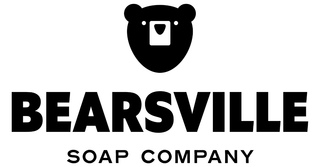APPROXIMATELY 5oz SOAP BAR.
Handcrafted old-school style, in a cold process method.
HANDCRAFTED OLD-SCHOOL STYLE.
Made in a traditional cold-process method.
PROUDLY MADE IN THE USA.
Ingredients sourced domestically.
NO HARSH CHEMICALS.
Free of GMOs, phthalates or parabens; cruelty-free & vegan.
SUBSCRIBER EXCLUSIVE.
Only available in subscription bundle.
LEARN MORE
NO HARSH CHEMICALS.
Free of GMOs, phthalates or parabens; cruelty-free.
ZERO GRIT.
A smooth & gentle cleanse.
LIGHT GRIT LEVEL.
Refined pumice powder gently exfoliates & revitalizes skin.
MEDIUM GRIT LEVEL.
Pumice naturally exfoliates & revitalizes skin.
HEAVY GRIT LEVEL.
Pumice naturally exfoliates & revitalizes skin.
HAND-POURED SOY CANDLE.
Made from a natural and completely renewable source.
MATTE BLACK GLASS VESSEL.
3.5" tall x 3.2" wide; 20oz weight
ESTIMATED 60 HOURS OF BURN TIME.
Soy has a lower melting point than other waxes, for a longer burn.
CRAFTED WITH OUR WOODEN WICK.
Burns like real wood (because it is.)
PROUDLY MADE IN THE USA.
Components sourced domestically.
2.6oz NATURAL DEODORANT.
Solid format with smooth application.
ALUMINUM FREE.
Free of aluminum, talc, phthalates and baking soda.
ALL-DAY PROTECTION.
Fights odor for up to 24 hours.
PROUDLY MADE IN THE USA.
Handcrafted in small batches.
2oz MOISTURIZING BALM.
Quenches dry skin and locks in moisture.
EMOLLIENT-RICH BEESWAX FORMULA.
No-nonsense base formula of beeswax, shea butter & sunflower oil.
TRAVEL FRIENDLY.
Solid format won't raise flags with airport security.
STORE IN A COOL, DRY PLACE.
To retain its solid form, avoid extreme heat.
8 FL oz. LIQUID SHAMPOO.
Mild enough for everyday use, and optimized for most hair types.
PREVENTS STATIC.
Ingredients derived from coconut oil to prevent static (aka fly away hair.)
NO HARSH CHEMICALS.
Free of parabens, phthalates and dyes.
THREE SOAP BARS.
Approximately 5oz each.
8oz MOISTURIZING LOTION.
Premium, emollient-rich formula.
8 FL oz HAIR CONDITIONER.
Mild enough for everyday use and great for all hair types.
pH BALANCED.
Tames unruly hair and leaves it feeling smooth, soft and healthy.
8 FL oz SHAMPOO + 8 FL oz CONDITIONER.
Mild enough for everyday use and great for most hair types.
APPROXIMATELY 5oz SHAMPOO BAR.
Naturally derived plant-based formula.
CONCENTRATED SOLID FORMAT.
Formulated with less water - for a more powerful dose of cleansing agents.
CLEANSES & CONDITIONS.
Packed with natural moisturizers to leave hair soft & manageable.
FOUR SHAMPOO BARS, 5oz EACH.
Handcrafted old-school style in the usa.
1oz PREMIUM BEARD OIL.
Formulation of high-caliber natural oils.
OPTIMIZED FORMULA.
Balanced for easy absorption, leaving a lightweight & non-greasy feel.
TAMES AND SMOOTHS FACIAL HAIR.
Also nourishes the skin underneath - and refines skin texture.
2oz PREMIUM BEARD BALM.
Formulation of high-caliber natural oils, waxes & butters.
OPTIMIZED FORMULA.
A balanced texture which absorbs easily.
PACKED WITH VITAMINS AND ANTIOXIDANTS.
Leaves beard conditioned and healthy.
2 FL oz FRAGRANCE.
Convenient & travel-friendly spray bottle.
APPLY ON PULSE POINTS.
Behind ears, base of neck, and wrists.
BLENDED WITH ORGANIC ALCOHOL.
Unlike commercial fragrances, we use an organic alcohol; allow it to completely evaporate for the scent to unfold.
FOUR SOAP BARS.
Approximately 5oz each.
8oz LIQUID HAND SOAP.
Organic castile formula.
ULTRA THICK & RICH.
A small amount lathers up best.
PURE PLANT OILS.
No synthetic detergents, no foaming agents, no chemicals.
PACKED WITH NATURAL MOISTURIZERS.
Leaves a nourishing, smooth finish.
PERFECTLY SIZED FOR BARS.
3" x 5" x 1/4"
MADE OF BIODEGRADABLE MATERIAL.
From natural substances; no petroleum & bpa free.
SIMPLE TO CLEAN.
Just rinse it under running water.
FOUR EXFOLIATING BARS.
Approximately 5oz each.
EIGHT SOAP BARS.
Approximately 5oz each.
SIX SOAP BARS.
Random assortment of imperfect or incorrectly sized soap bars.
SALES OF THIS ITEM ARE FINAL.
No returns or exchanges.
SAVE 10% OFF ALL SHIPMENTS.
You'll save on anything and everything in the bundle.
SWAP ITEMS WHENEVER.
Change your product selections as often as you'd like.
THERE'S ZERO COMMITMENT.
Skip, reschedule, or cancel anytime.
GET THE NEWEST LIMITED EDITION.
Automatically updates to the latest limited edition bar.
SUBSCRIBER EXCLUSIVES.
Early access to new and subscriber-only products.
THREE LIMITED EDITION SOAP BARS.
Approximately 5oz each.
E-GIFT CARDS CAN BE E-MAILED DIRECTLY TO THE RECIPIENT.
Or printed and given in-person.
NO HIDDEN PROCESSING FEES.
Gifts should be given with no strings attached.
CAN BE REDEEMED AT ANY TIME.
They never, ever expire.
SOAP LIFT MADE OF BIODEGRADABLE MATERIAL.
Perfectly sized for bars (3" x 5" x 1/4")
DETOXIFYING ACTIVATED CHARCOAL.
Absorbs dirt, toxins, and excess oil from the skin.
APPROXIMATELY 5oz SOAP BAR.
Handcrafted old-school style, in a cold process method.
FOUR LIMITED EDITION SOAP BARS.
Approximately 5oz each.
EMOLLIENT-RICH NATURAL OILS.
Hydrates, soothes, and protects skin.
MADE WITH REAL BEER.
The alcohol evaporates, leaving rich antioxidants - and a super creamy lather.
SOOTHING & CALMING LAVENDER.
Anti-inflammatory, antibacterial and antiseptic properties.
DISTILLED PINE TAR.
Naturally cleanses and conditions skin.
MEDIUM GRIT.
Strawberry seeds exfoliate and revitalize skin.
CONTAINS FRESH GOATS MILK.
Natural moisturizer packed with vitamins A and E.
CLAY DRAWS AWAY OIL & DIRT.
Leaves skin extra clean and conditioned.
MINERAL-RICH DEAD SEA SALT.
Detoxifies, moisturizes, and soothes skin.
TIME-HONORED PINE TAR FORMULA.
Conditions skin with antibacterial and antifungal properties.
CEDARWOOD ESSENTIAL OIL.
Conditions skin with antibacterial and antifungal properties.
COOLING PEPPERMINT.
Refreshes and soothes skin.
EUCALYPTUS ESSENTIAL OIL.
Conditions skin with antibacterial and antifungal properties.
FIR NEEDLE ESSENTIAL OIL.
Natural cleansing and antiseptic properties.
TWO 2.6oz NATURAL DEODORANTS.
Solid format with smooth application.
MEDIUM GRIT LEVEL.
Refined volcanic pumice naturally exfoliates & revitalizes skin.
COOLING MENTHOL.
Refreshes, soothes and conditions skin.
HEALING ALOE VERA.
Natural humectant that draws moisture into the skin, keeping it hydrated and supple.
TWO SOAP BARS.
Approximately 5oz each.
FORMULATED WITH CASTOR OIL.
Nourishes the scalp while supporting healthy hair growth.
THREE HAND-POURED SOY CANDLES.
Made from a natural and completely renewable source.
EACH DELIVERS 60+ HOURS OF BURN TIME.
Soy has a lower melting point than other waxes, for a longer burn.





